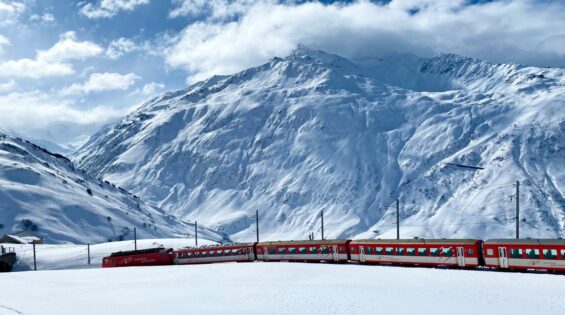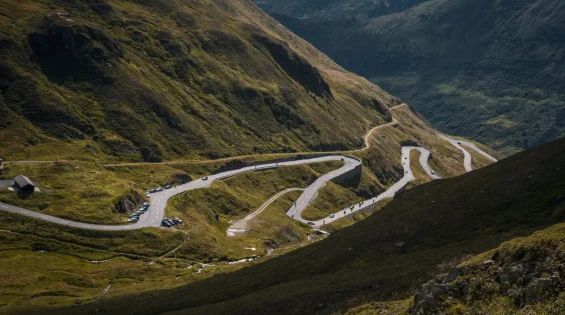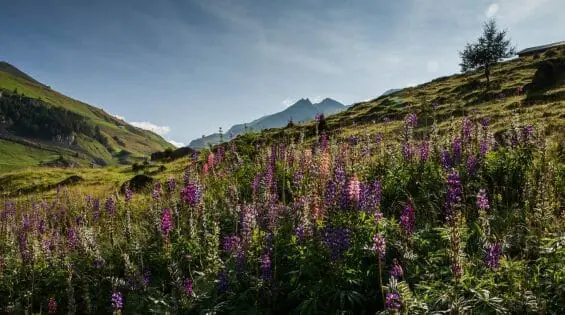How Now, Andermatt Cow
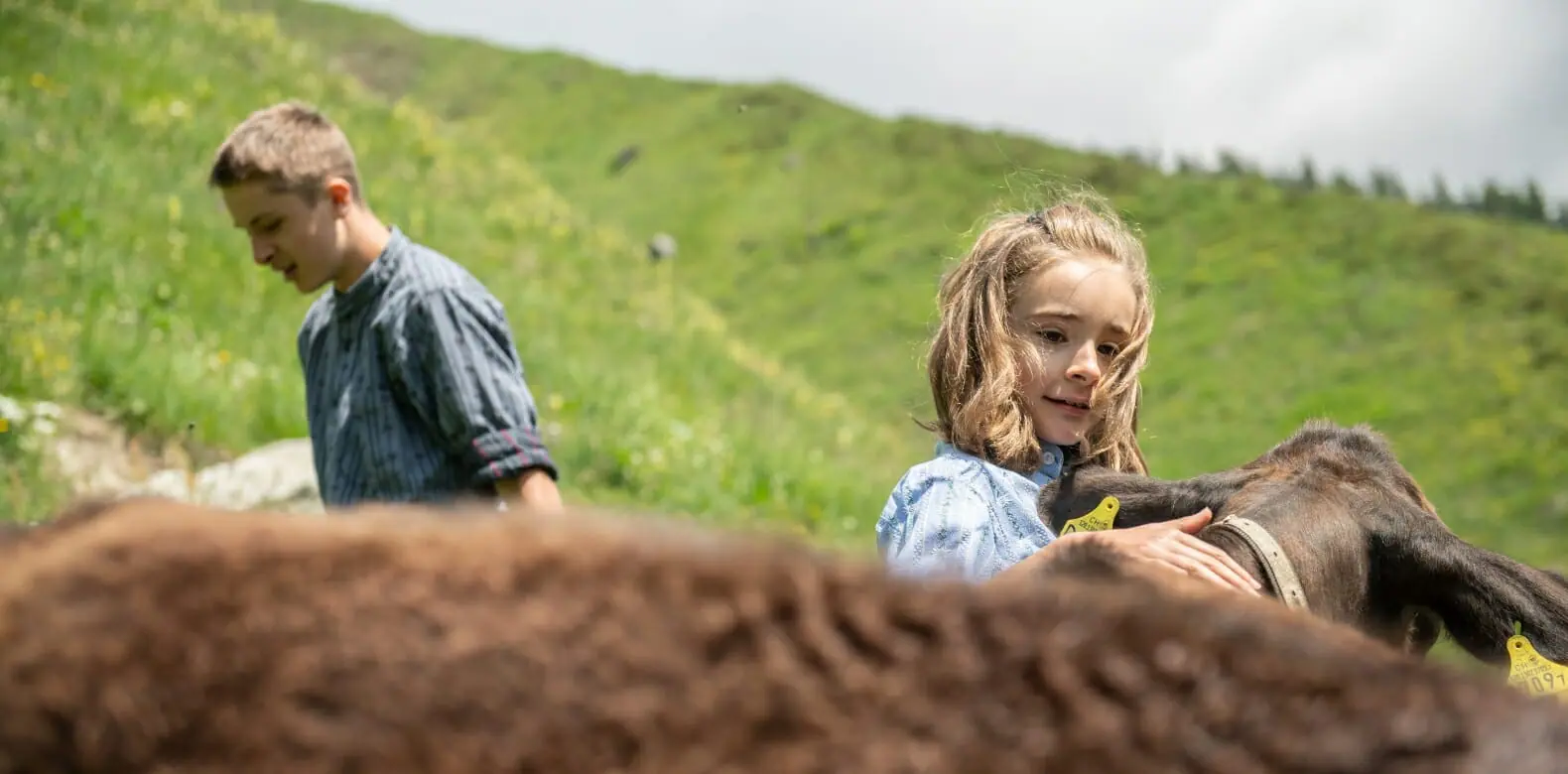
In the mountain pastures above Andermatt, a herd of Wagyu cattle is attaining peak contentment in the brilliant summer sun.
As the day burns off the last vestiges of the morning mist, the animals amble through the meadow against the backdrop of the towering summits.
They pause periodically to chow down on the veritable banquet provided by Mother Nature: a spread of nutrient-rich Alpine grasses garnished with a cornucopia of mountain herbs and flowers.
In gourmet circles, they say a happy cow is a tasty cow.
These cows aren’t strictly from these parts. They’ve been nurtured using imported embryos from Australia specifically for The Japanese, the award-winning Japanese restaurant at The Chedi Andermatt.
But, observing them alongside farmer Urs Gisler, I can attest to the fact that they look very much at home.
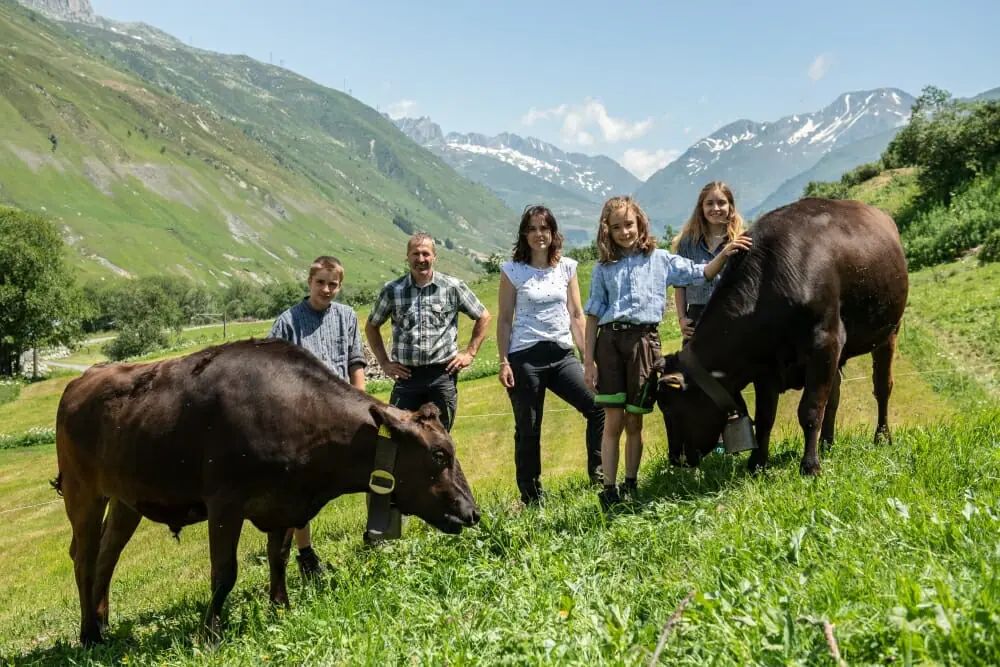
Urs Gisler and his family imported the first Wagyu cows to Andermatt in 2015.
“They spend the whole year in the heart of the Swiss Alps so of course they are happy,” grins Gisler. “What more can a cow want than to be eating fresh Alpine herbs breathing fresh air? It’s pure freedom in fantastic nature.”
It’s a long way from the heart of the Alps to the Kansai region of Japan, regarded as the motherlode of perfectly marbled meat. The distance, as the crow flies, is just under 10,000km.
Gisler, though, is adding an Alpine spin to legendary Japanese beef rearing methods. At the same time, the initiative is helping The Chedi Andermatt to maintain a steady flow of high-grade entrecote for The Japanese while reducing its carbon footprint in the process.
“As we use around 40kg of Wagyu entrecote a week we need a constant supply,” says Dietmar Sawyere, executive chef at The Chedi Andermatt as we take a pew at the counter at The Japanese. “We decided a few years ago to start a project of producing Australian Wagyu embryos in the high Alpine environment and the results have been excellent.
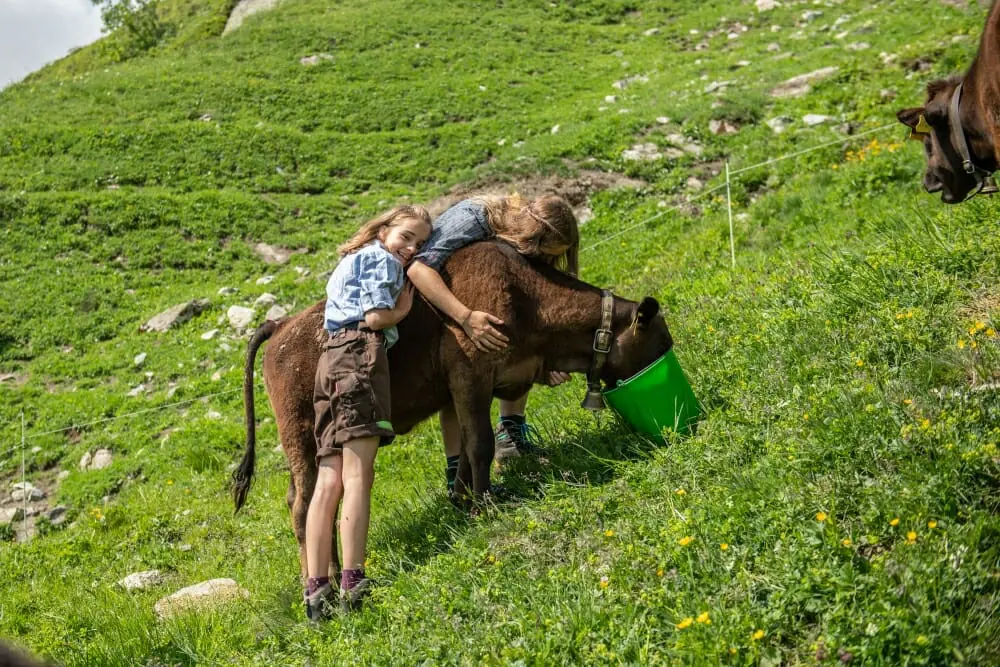
The Gisler’s rear their Wagyu cattle for approximately 1,100 days before slaughter, which is roughly twice as much time as conventional cattle.
“We have produced a lovely, marbled Wagyu product that has an intense beef flavour as the animals are free-range and only fed on alpine grass and herbs. The wonderful bonus is that we also reduce our carbon footprint as the animals are raised, slaughtered and used within a three-kilometre radius.”
The Alpine Wagyu produced exclusively for The Chedi Andermatt is the latest succulent chapter in the story of one of the world’s most sought-after gourmet products.
Simply put, Wagyu means “Japanese cow”. It seems like a straightforward definition, but the permutations can tax even knowledgeable foodies. The most renowned Wagyu—Kobe beef, Matsusaka beef and Omi beef being three notable varieties—come from Japan.
Legend has it that these cows are fed beer, massaged with sake, and serenaded with classical music to ensure maximum equilibrium. Whether this is widely the case is a moot point. But it highlights the emphasis on indulgent animal husbandry.
Wagyu produced in other countries around the world such as Australia, the United States — and Switzerland — is almost always crossbred with other breeds. Japanese cattle have a pure lineage with no crossbreeding, making them 100% full-blood Wagyu: a fact reflected in the high price tag of their beef and the reverence that chefs have for it.
“Beef from Japan is unique,” adds Sawyere. “It is like Champagne. You can make a good sparkling wine elsewhere, but you can only make Champagne in the Champagne region.
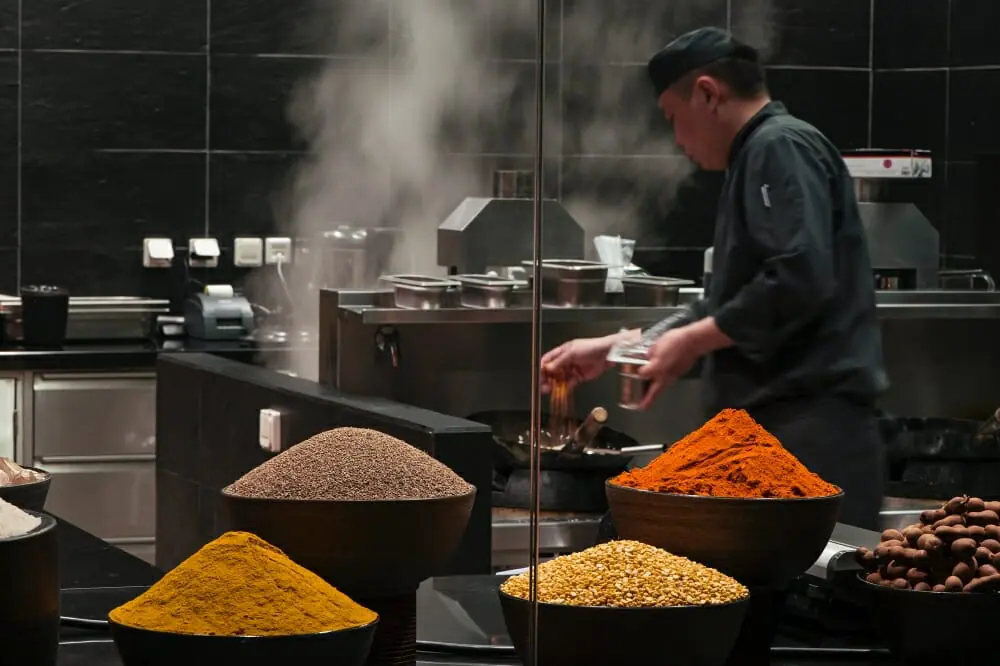
Asian cuisine is at the heart of every GHM hotel.
“Having said that, our Alpine Wagyu is, in my opinion, a superior product in terms of flavour profile than other non-Japanese produced Wagyu and therefore is worth pursuing.”
With that, I sample some Wagyu dishes from Sawyere’s modern omakase kaiseki menu — a “chef’s choice” selection that he changes every couple of weeks.
Beef creations include Wagyu entrecote sushi with ponzu gel, oscietra caviar and cherrywood smoke; tartare and tataki of Wagyu beef with cured egg yolk, pickled alpine flowers, nori crackers and fresh wasabi; and grilled Wagyu entrecote, slow-baked aubergine, alpine spinach, and yakiniku sauce.
The meat is as yieldingly soft and flavorful as any I have ever tasted — and I’ve had the pleasure of sampling Japanese Wagyu in Japan on numerous occasions.
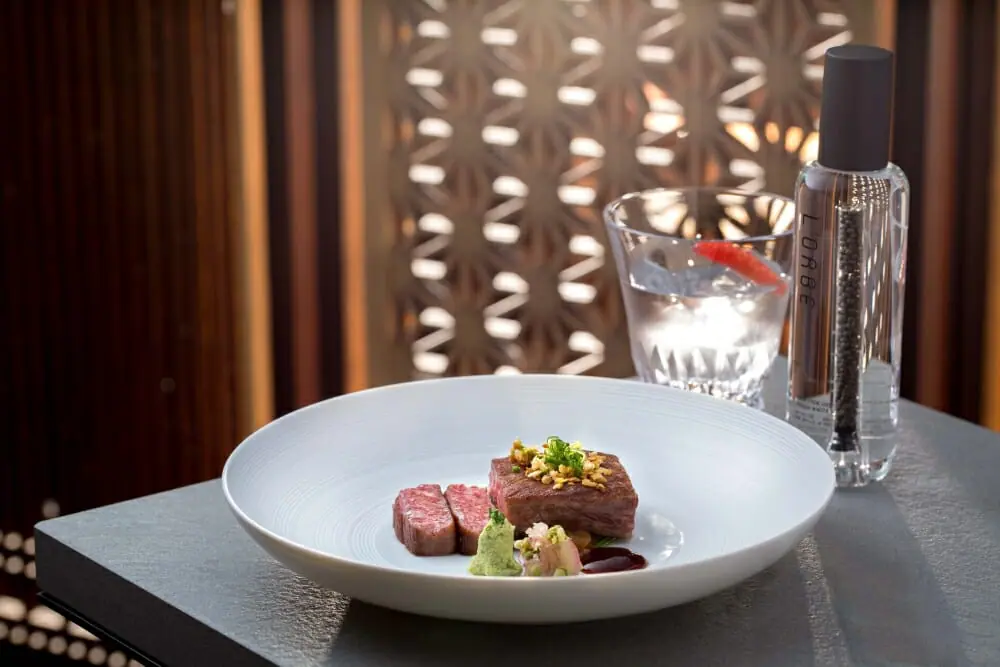
Exquisitely marbled Wagyu beef graces the plate at The Chedi Andermatt.
“We are the only ones producing a Wagyu strain at altitude using traditional alpine farming methods,” says Sawyere. “And it is clear in the taste profile that the mix of alpine pasture with its herbs and flowers makes a significant difference in the flavour profile.”
I polish off my food, drain a cup of premium Japanese sake and savour the views of Gotthard, the Oberalp Pass and the Ursern Valley from this, Switzerland’s highest-altitude Japanese restaurant. An atmosphere of total contentment is being achieved. A happy cow is indeed a tasty cow. And I am a satisfied diner.
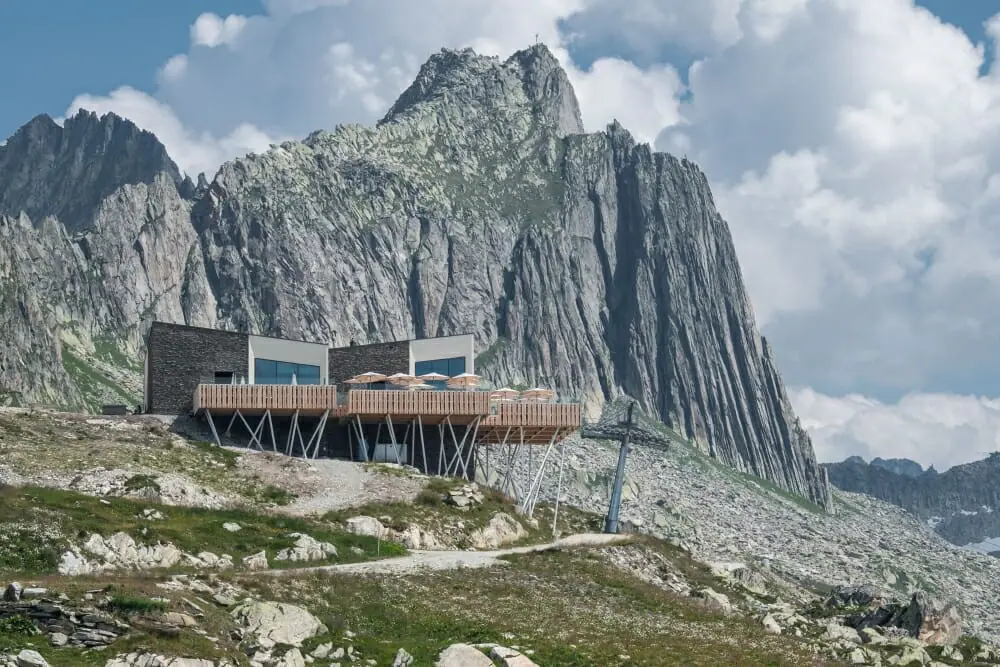
An outpost of the hotel’s in-hotel Japanese Restaurant, The Japanese By The Chedi Andermatt at Gutsch is perched on a flank of mountain above Andermatt.
Click here for more on the restaurants at The Chedi Andermatt.
Text by Duncan Forgan for GHM Journeys.
Published on 5 October 2021.

